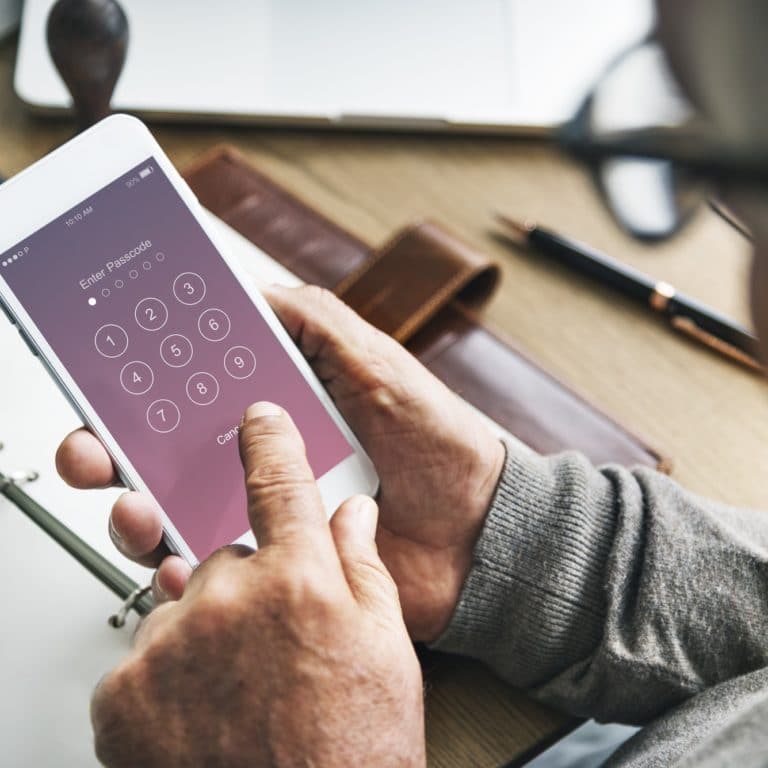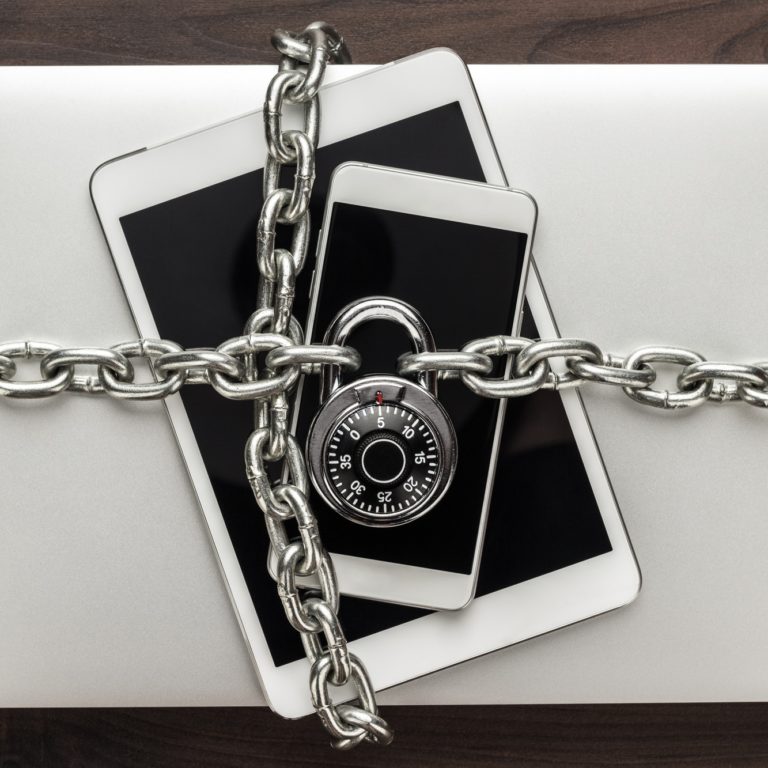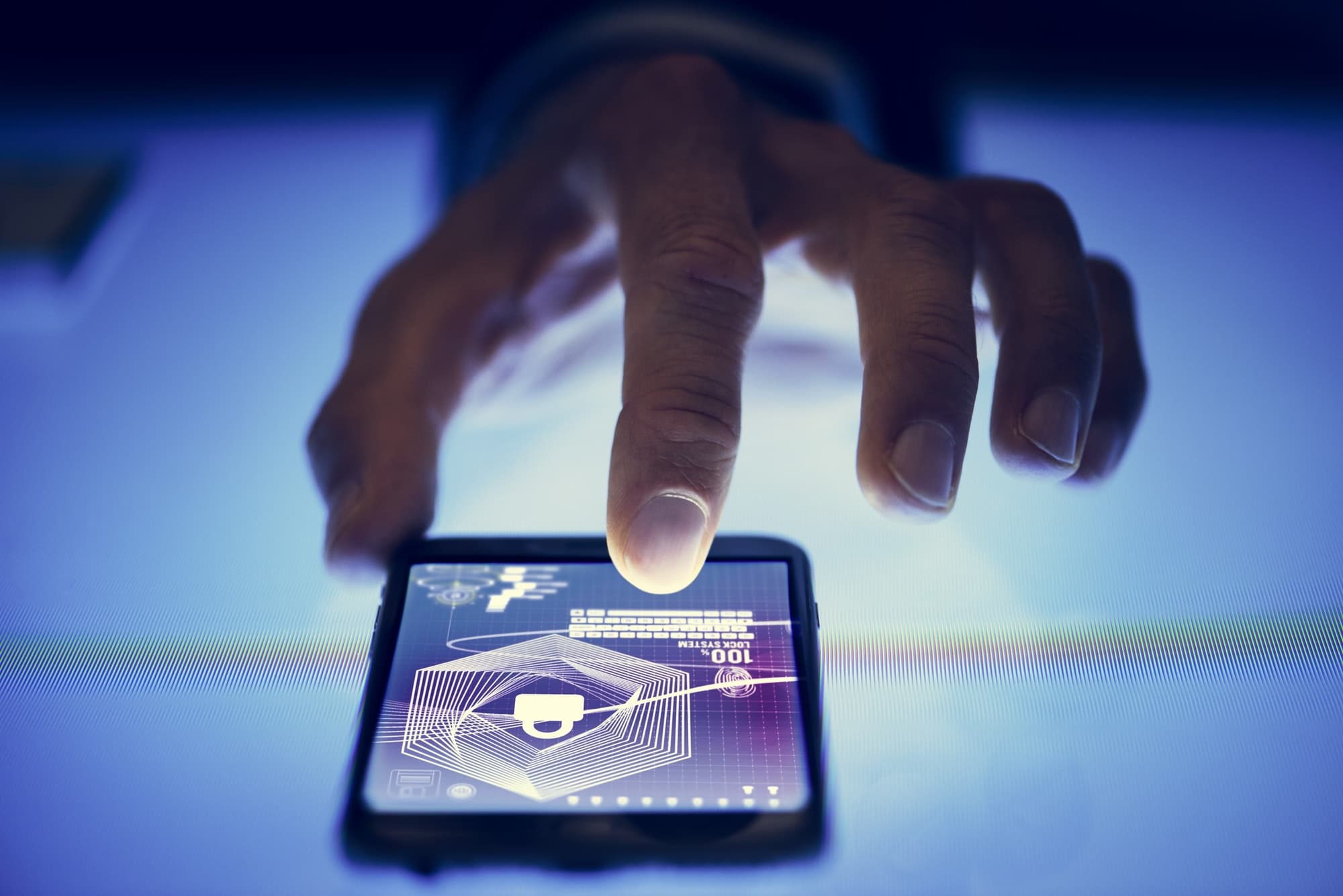
LOCK YOUR MOBILE
As simple as it sounds, locking your smartphone is one of the most basic things that you can do to ensure smartphone security. If your phone gets lost by any chance, a simple PIN lock can prevent someone from immediately doing any harm to your personal data. It gives you the time and the chance to block your credit card details or block access to other important data. Locking your data is as simple as setting a PIN code, pattern lock, password or Fingerprint lock.
• Password
A password is a strong, secure way to lock your phone. Passwords can be difficult to guess, and it can help ensure that your personal data remains personal. However, typing a password into your mobile phone several times a day can turn out to be cumbersome. Use passwords only when you need the highest level of security.
• PIN
A PIN code can turn out to be a simple alternative to a password. It can be shorter, easier to remember and easier to type in several times a day. Using a 4 digit pin is a good solution, as there are 10 thousand different combinations. Just make sure not to choose something obvious like 1234 or 4321.
• Pattern Lock
A pattern lock allows you to draw a pattern using a grid of nine dots. You can create a huge combination of patterns, and it is easier to enter multiple times throughout the day. However, patterns are only as secure as the kind of pattern you create. Another con of using a pattern lock is the fact that someone can easily remember your pattern by just looking over their shoulder. Hence, patterns are recommended only if you have nothing to worry about.
• Fingerprint Sensor
Not all smartphones have fingerprint sensors. However, all new models of smartphones being shipped nowadays have fingerprint sensors embedded in them. A fingerprint sensor is by far the most secure and fast means of unlocking your phone. The only problem is that not all smartphone have a proper placing of the fingerprint sensor. Fingerprint sensors are hence the most recommended means of locking your smartphone. Use a PIN code or password only as a backup.
ADD PROTECTION
Use the security features that come in your Android/ iPhone devices. Apple device users can turn on the “Find My iPhone” feature in iCloud, which might come handy in locating a missing device and erasing important data using an activation lock feature.
SET STRONG PASSWORDS
Be it your social media account, or your banking login account, setting a strong password everywhere is mandatory. Your password should be a unique combination of letters, numbers and special characters and should be difficult to guess. Do not use the same password everywhere, and use a password manager to keep track of all your passwords. Setting strong passwords is another method to ensure smartphone security and prevent someone from tampering with your personal information.

USE APPS FROM THE GOOGLE PLAY STORE OR THE APPLE STORE
Apple Store and the Google Play Store continuously remove fraudulent apps from the marketplace. Rarely, Google and Apple do fail at protecting the influx of fake apps that seep into the Google Store and Apple Store unknowingly. However, it can be said that the Google Play Store and Apple Store are safer than ever now and downloading apps from these stores are comparatively more secure than downloading bogus apps from unreliable third-party applications.
USE DEVICE ENCRYPTION
Encrypt your Android smartphone/ iPhone to encrypt the data in your phone. Encryption differs greatly from a simple PIN or passcode. Even if a hacker gets in through the lock screen, your personal information is rendered useless/unreadable unless they have the encryption key. The downside to encrypting your mobile data is that it takes you longer to log in to your device. However, using device encryption takes security one step further and is usable when you have extremely vital data in your smartphone.
If you are an IOS user, setting device encryption is as simple as setting up a passcode to lock your device. The option can be found under Settings > Passcode.
If you are an Android user, note that the lock screen and device encryption are separate entities but related. You cannot encrypt your data without turning on the lock screen. To enable device encryption, plugin in your device, set a strong password and navigate to Settings > Security > Encrypt Device. Follow the on-screen instructions and complete the process. Once you encrypt your phone, you cannot turn it off without factory resetting your phone.
USE A VIRTUAL PRIVATE NETWORK
Use a mobile Virtual Private Network to ensure that the free Wi-Fi you use when you have that sip of coffee on the way to work does not come back to bite you. However, make sure that you do not use a free VPN service as they usually don’t work.
USE AN ANTI-VIRUS SOFTWARE
Use a suitable, paid, anti-virus software to prevent malware from attacking your smartphone data. Some smartphone security anti-virus software also offers the feature of phone tracking, which might not work as expected, but are good-to-have additions.
DELETE UNUSED APPLICATIONS
Constant security updates of apps make the apps secure. However, not all apps regularly release patches, hence stagnant and unused apps might turn out to be an open door for a possible attack. Delete unused apps to reduce the chances of an attacker entering your phone to obtain vital information.
TURN OFF UNUSED CONNECTIONS
Turning off Bluetooth and Wi-Fi when not in use does not only save your battery life but can also prevent your smartphone from possible attacks. Open network connections can be used to attack you hence it is advisable to turn off all connections when not in use.

